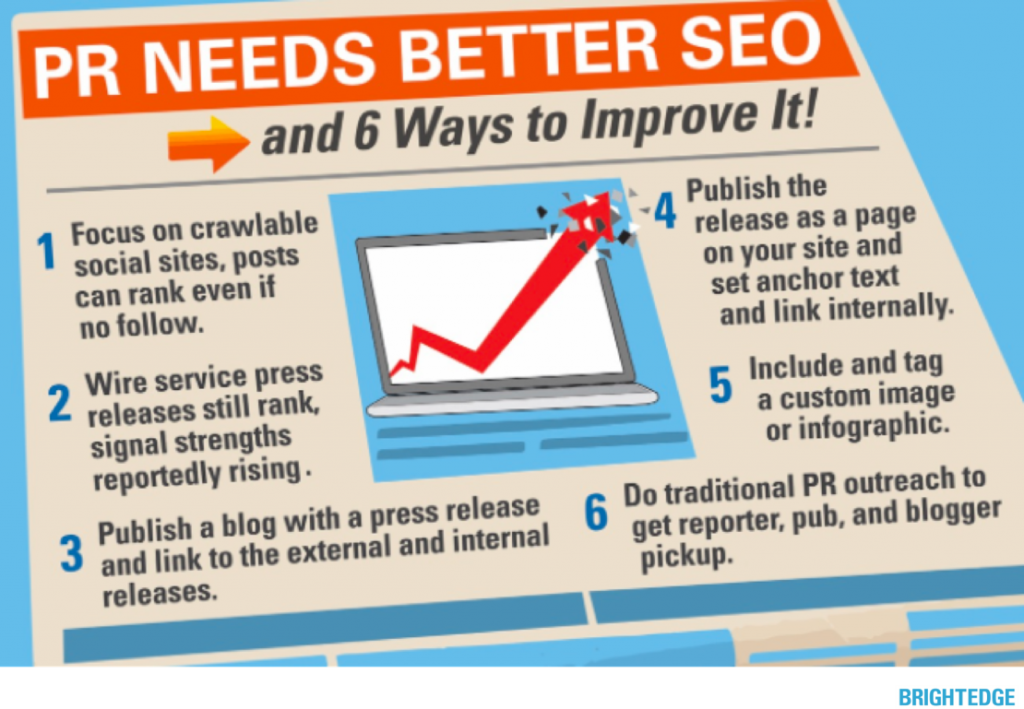The full power of the digital marketplace was realized less than a decade ago. Suddenly, customers had seemingly limitless access to engage with brands –– to voice their criticisms and critiques, or to become super fans.
The importance of a website presence, blogging, social media posts and the other aspects of building an online brand seemed to sound the death toll for traditional communications and marketing strategies, like public relations.
However, we are nearing the second decade of the 21st century, and public relations continues to prove itself as an essential element of marketing communications. Like other aspects of marketing, it’s a discipline that has morphed and evolved to fit into the changing digital ecosystem, in which the value of appearing at the top of the search engine results page is arguably equitable with yesteryear’s goal of a front page headline.
Brands attuned to these changes and the importance of integrated, hybrid marketing will find that public relations, SEO and content marketing now heavily influence each other. Successfully leveraging this trio can help build strong brands that drive traffic, customers and revenue.
The digital brand trifecta
A consistent theme throughout the ages, branding – the practice of crafting measured messaging around a product to guide public perception – has always been a pillar for marketing communications.
Simply put, a strong and positive brand image drives customer awareness, recognition and action. The most effective brands, while simple at the surface, conjure complex responses; consider that 90 percent of purchase decisions are made subconsciously.
Evoking the right perception of a brand can make an enormous difference in conversions and revenue – this is where public relations plays a role by subtly inserting brand messaging into external sources that consumers today are more likely to consume and engage with than pushed advertising.
The expansion of the digital world and rise of the separate disciplines SEO and content marketing as a means of reaching consumers through targeted content has resulted in the consolidation of the roles of SEO and content.
The role of public relations has emerged from this phenomenon quite naturally; while content marketing and SEO traditionally focus on on-site content, public relations is the impetus for third party content that drives brand messaging and digital traffic.
Customers today hold brands to high standards: 60 percent of millennials say they expect to have a consistent experience with organizations across the various platforms. Customers expect to be able to interact with brands whenever they want and wherever they want. To meet these needs, organizations themselves need to understand how to integrate their various disciplines to create a uniform voice.
How content marketing, SEO, and public relations overlap
At its core, public relations is essentially about creating excellent professional content that appeals to quality publications, while positioning the brand at the top of readers’ consideration sets.
These goals intertwine tightly with those of content marketing. It is estimated that we now produce more data in two days than has existed for the entirety of the human experience up until 2003, and 39 percent of B2B brands plan on increasing content budget in the next year. The online world has become saturated with content.
However, where we excel in quantity, we lack in quality. Today, consumers demand material that addresses them and their needs while also offering guidance and help. In other words, those in content marketing need to pay equally close attention to the value they are offering and how it satisfies the needs of consumer intent.
SEOs role in companies has always been to boost the rankings of the content the brand produces to get the brand site and name in front of people performing searches on the search engines. By optimizing material for particularly relevant queries, SEOs can help draw the appropriate audience back to the website where leads can be nurtured and converted.
When used correctly, public relations can be a helpful asset in accomplishing these SEO goals. Many popular media outlets, for example, rank highly on the SERP thanks to a strong domain authority.
Brands that find smart ways to insert themselves into these sites –– often via a combination of news coverage and contributed articles –– have the opportunity to establish their presence for particular keywords that may struggle to rank from their own site. This provides an opportunity for brand recognition and to create a brand impression from a place of authority.
Knowledge is the key to the digital brand trifecta of employing public relations, content marketing and SEO to work together and build the brand’s reputation online. Below are steps teams can take to begin to bring these elements into successful harmony.
Aligning SEO, content development and public relations
1. Develop common target personas
Personas remain the key to any successful marketing campaign. They also serve as the cornerstone for successful collaboration between teams.
Generally, public relations professionals will have a general idea of what they want to promote and to whom, while SEO and content marketing professionals may have their own ideas about who they want to target.
Joining the research and considerations that went into developing the target personas on both sides can strengthen them for the brand and ensures that everyone understands the target for particular campaigns.
2. Obliterate working siloes
To achieve maximum success with public relations, you should develop common campaigns that will use principles from both SEO and PR. Combine the resources that each team utilizes to see how they might benefit each other.
For example, the material produced by the public relations team should be appropriately optimized by the SEO team and reviewed by the content team to ensure a consistent voice and to ensure that it ranks for the keywords the organization wants to target.
The public relations team can also work with the SEO and content teams to secure contributed columns and backlinks from reputable publications. Remember that content marketing is not just about producing content, it also needs to incorporate distribution. Coordinating with public relations can ensure that this piece is not overlooked.
3. Collaborate on content
Although SEO, content marketing and public relations teams will have different central goals, they should run their campaigns using a common base. Keywords that the SEO team targets, for example can also be incorporated into press releases to boost brand recognition.
If there are words that the domain struggles to rank for, creating press releases for well-regarded publications can help capture these rankings.
Reputable publications speaking about important research or releases that your brand has can lend greater credibility to these announcements, making it easier for your on-site announcements to gain traction and engagement.
4. Measure your progress and success
As with any marketing effort, brands need to measure every step of their collaboration between these three key teams. Look at KPIs that let you see how well customers engaged with material, the amount of traffic and leads being driven from press releases and how having a strong PR campaign impacts the engagement and conversion metrics across other aspects of the marketing strategy.
Look at the numbers before and after the efforts have been used, as well as the impact across different buyer personas and stages of the buyer’s journey. The greater the insight and understanding you have, the easier it will be to identify strengths and weaknesses of the campaign.
In sum, public relations is far from dead. Its value has grown to become one of three essential digital marketing elements. The marketing efforts that brands must use to build their organization’s name and shape the reputation of their brand online continue to remain of critical importance.
The difference now, however, lies in the means of this self-promotion. Public relations now has the strongest impact when it finds a strategic home with SEO and content marketing. The closer you can align these different departments, the easier it will be to see how public relations can be helpful in boosting your brand.
source https://searchenginewatch.com/2017/09/25/the-collision-between-pr-content-and-seo-how-to-make-it-work-for-you/


No comments:
Post a Comment